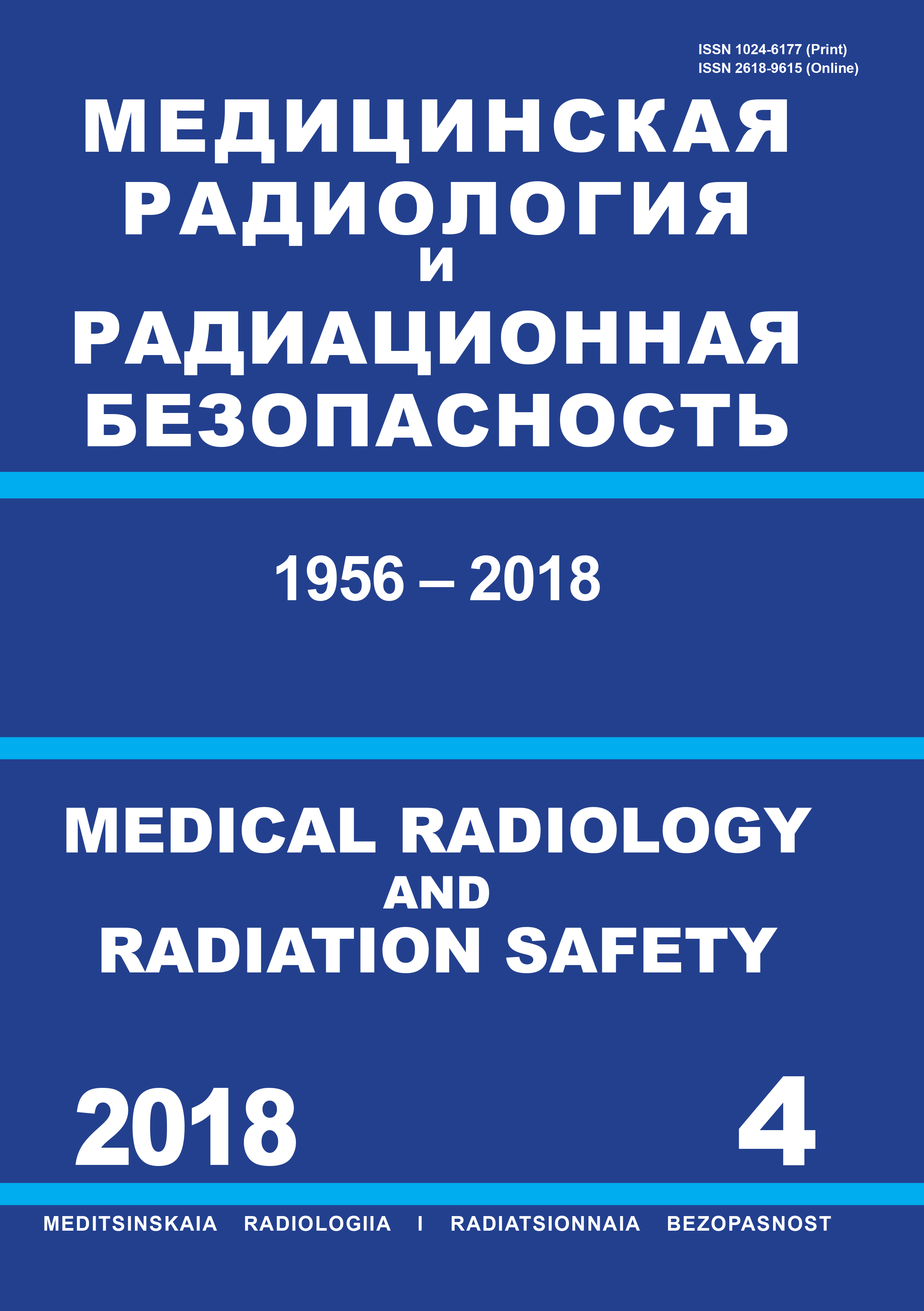Russian Federation
Russian Federation
Russian Federation
Russian Federation
CSCSTI 34.49
Purpose: Clinical trials involving study of functions, assessment of drug and radiation safety of the radiopharmaceutical drug “Rezoscan, 99mTc” in comparison with the “Technefor, 99mTc”. Material and methods: Clinical studies of RP “Rezoscan, 99mTc” were carried out using a diagnostic gamma camera Toshiba. The study involved 25 patients: 2 patients diagnosed with prostate cancer, 3 patients diagnosed with cervical cancer, 15 patients diagnosed with breast cancer and 5 patients diagnosed with coronary artery disease without cancer, who underwent osteoscintigraphy to identify osteoporosis foci and who signed an informed consent to participate in the study. To study the functional properties of RP “Rezoscan, 99mTc”, we studied its pharmacokinetics and evaluated the quality of visualization of pathological foci in bone tissue. To assess drug safety the patient was monitored for 15 days with an assessment of acute and delayed reactions to intravenous administration. Radiation safety of the RP was estimated using values of absorbed radiation doses of organs and effective doses to patients [1]. To the same patients the radiopharmaceutical preparations “Rezoscan, 99mTc” and “Technefor, 99mTc” were injected sequentially in one day. Results: According to the pharmacokinetics study, the accumulation of RP “Rezoscan, 99mTc” in the skeleton in 2 hours reaches 40 % of the administered amount. At the same time, a relatively rapid excretion of the drug from the soft tissues takes place, which makes it possible to clearly visualize the condition of the bone system and to reveal pathological changes with coefficients of differential accumulation (CDA) bone/soft tissues of about 10. Comparative studies of the functional characteristics of RP “Rezoscan, 99mTc” and “Technefor, 99mTc” showed the advantage of the new drug in the early detection of pathological changes in bone tissue with the metastatic skeletal lesion. In all cases in the study with RP “Rezoscan, 99mTc”on scintigrams in 15 patients with a verified diagnosis of breast cancer, the pathological foci of hyperfixation RP, which are typical for metastatic bone lesions, were visualized. In the same patients, examined with the help of the RP “Technefor, 99mTc”, pathological foci in the skeleton were visualized only in 13 cases. According to the results of studies of patients with RP “Rezoscan, 99mTc” accuracy was 0.8, sensitivity – 0.9, specificity – 0.6. According to the study of patients of the same group with RP “Technefor, 99mTc” defined: the accuracy is 0.8, sensitivity – 0.8 and specificity – 0.4. Based on the results of monitoring the condition of patients for 15 days, acute and delayed reactions to intravenous administration of the drug were not detected. The estimate of the absorbed radiation dose values of RP “Rezoscan, 99mTc” in organs and tissues of patients, as well as effective doses of irradiation allow us to suggest that the introduced RP activity and patient dose do not go beyond the previously established reference levels. Conclusions: The radiopharmaceutical “Rezoscan, 99mTc” can be used for the early detection of pathological foci of bone tissue.
radiopharmaceuticals, zoledronic acid, osteoscintigraphy, “Rezoscan, 99mTc”, “Technefor, 99mTc”
Уже в конце 1970-х гг. прошлого столетия по результатам сравнительных исследований ряда диагностических радиофармацевтических препаратов, используемых для визуализации патологических очагов скелета, препаратами выбора были признаны РФП на основе бисфосфонатных комплексов, меченных 99mТс. Одним из них является отечественный РФП «Технефор, 99mТс». С тех пор для улучшения функциональных свойств остеотропных РФП не прекращаются поиски новых бисфосфонатных химических соединений и путей совершенствования технологий их изготовления, которые продолжаются и в настоящее время [2–6]. В этой связи, такие остеотропные лечебные препараты как «Зомета (Novartis)» и «Резорба (ЗАО Фарм-Синтез)» на основе золедроновой кислоты, представляющей собой бисфосфонат последнего поколения, не могли не привлечь внимание разработчиков новых остеотропных РФП [7–9].
1. ICRP, Publication 106, Radiation Dose to patients from Radiopharmaceuticals; 2007.
2. Subramanian G, Agfee JG. A New Complex of Tc for Skeletal Inmaging. Radiology. 1971;99:192-6.
3. Rosenhall L, Kaye M. Technetium-99m pyrophosphate kinetics an imaging in metabolic bone Disease. J Nucl Med. 1975;16:33-8.
4. Schmitt G, Holmes R, Isitman A. A proposed mechanism for 99mTc-labeled polyphosphate and diphosphonate uptake by human breast tissue. Radiology. 1974;112:733-40.
5. Tofe A, Fransis M. In vitro stabilization of a low-tin bon-imaging agent (99mTc-Sn HEDP) by ascorbic acid. J Nucl Med. 1976;17:820-6.
6. Subramanian G, Agfee J, et al. Nc-99m-methylendifosphonate a superior agent for skeletal imaging; comparison with other technetium complexes. J Nucl Med. 1975;16:744-51.
7. Finding a new osteotropic drugs with technetium-99m based on DTPMPA. The research reports. Institute of Biophysics. Inv. No. b-4388. Moscow; 1983. Russian.
8. Cristy M, Eckerman K. Specific absorbed fraction of energy at varicus ages from internal photon sources. ORNL/TM-8391N1-7. Oak Ridge National Laboratory; 1987.
9. Asikoglu M, Durak FG. The biodistribution of a therapeutic dose of zoledronic acid labeled with Tc-99m. Appl Radiat Isot. 2009;67(9):1616-21.
10. Kasatkin YuN, Vidukov VI. Methods of decision-making in radionuclide diagnostics. Moscow; 1983. Russian.





